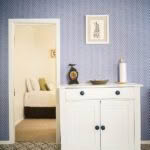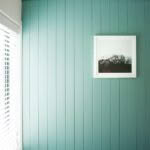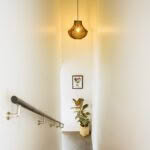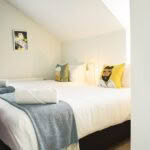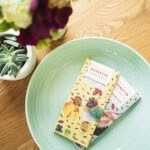The Bennetto family’s goldmine-era cottage is one of the most photographed in Arrowtown
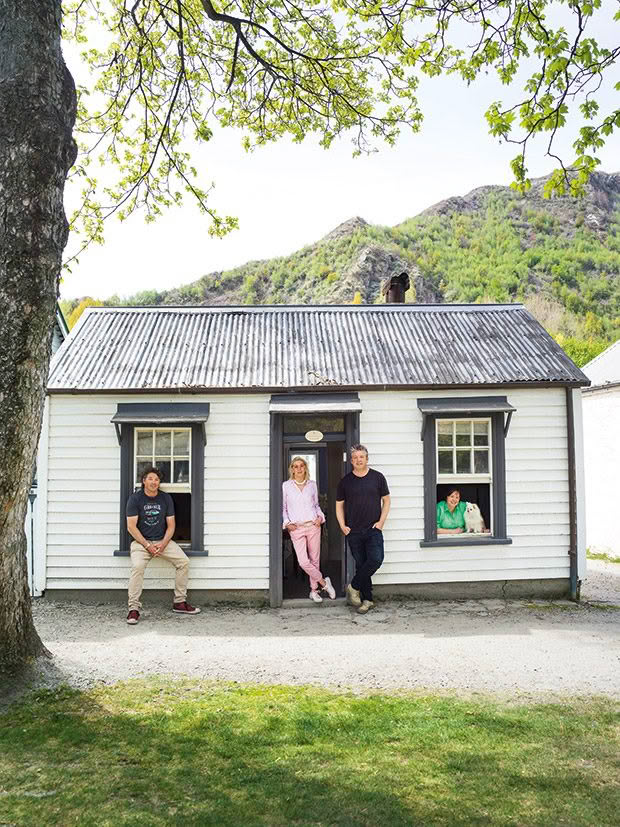
Four Bennetto siblings (Edd, Catherine, Charlie and Lucy with her pomeranian pooch Poppy) at their beloved Stevenson’s Cottage. Given the dinky appeal of the home’s frontage and its proximity to that gravelly public footpath, it’s no surprise that curious tourists have sometimes taken nosy liberties.
It’s loved by visitors to Arrowtown for its historic 1870s bones, but Stevenson’s Cottage is a portal to the halcyon days of this family’s 1980s youth.
Words: Claire Finlayson Photos: Rachael McKenna
The favourite sport of the Bennetto kids in the 1970s and 1980s? Terrorizing hapless tourists along Arrowtown’s main street. Catherine, Lucy, Edd and Charlie Bennetto, now in their 40s and 50s, vividly recall the cunning tricks they employed to turn the intrusive behaviour of tourists into their own delight — and profit.
With the front of their iconic gold-rush-era cottage facing onto the Buckingham Street footpath, proximity to inquisitive passersby was unavoidable. “We would freeze and pretend to be mannequins and then move suddenly and startle them,” says Edd (who now works in the film industry). “We used to have fun with that.”
Lucy (the woman behind Bennetto Natural Foods Co) did far more than startle stickybeaks: “Mum told me that when I was tiny, and the tourists were commenting on how cute the cottage was, I’d jump out at them and say, ‘This is our house, dumb-dumb.’
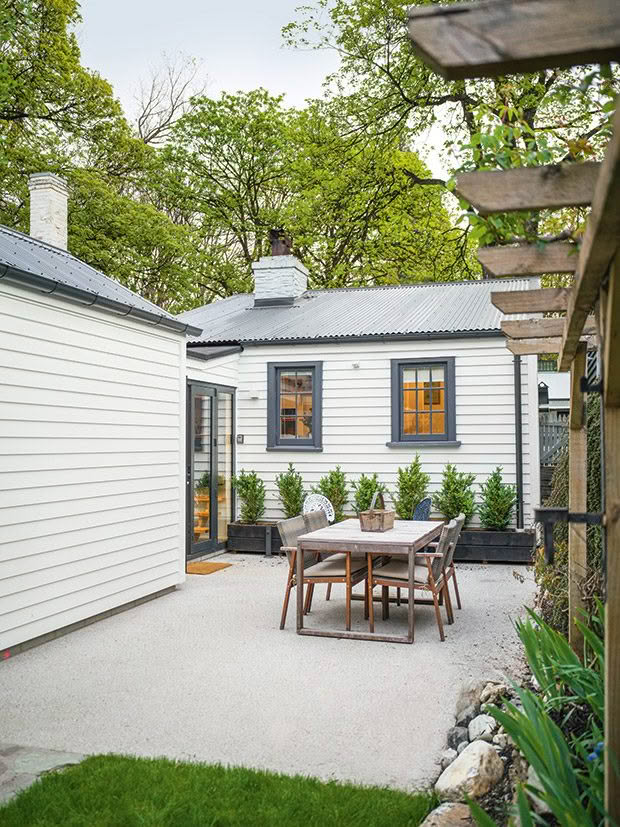
The rear of the cottage with its glass walkway connection to the new bathroom. The latter’s modern comforts are kept secret by the exterior’s cottage-sympathetic weatherboards and roof.
“We used to have the windows open for airflow with the curtains drawn, and tourists would just peek in. Some would even open the door and walk in. As we got older, we would sometimes put out our hands and say, ‘This is our little house, and we’re very poor and need money.’ I remember collecting quite a lot of cash (especially from American tourists). Mum was horrified. People would take photos of us, too.”
Known as Stevenson’s Cottage (named so for a former occupant), the house has long been the subject of paintings, photographs, tea towels and fridge magnets. It even featured, for a while, as the backdrop to the opening credits of TVNZ’s Seven Sharp. Built in about 1875, the two-bedroom, 46-square-metre weatherboard house is listed as a Category 2 structure, along with several of its Buckingham Street neighbours.
- Andrea Cammell, who worked on the cottage’s internal makeover, embraced the building’s wonky character.
- “None of the walls was straight, so wallpaper was tough to match up. Everything’s just a little sideways, which adds to the charm of it.”
- The childhood heights of the Bennetto family and friends scrawled on the door frame have confused a few recent Airbnb guests who, not realizing that this was a nod to the siblings’ past, enthusiastically added their own names and heights.
Heritage New Zealand Pouhere Taonga describes its worth: “Although humble and utilitarian, the cottage stands as a testament to the development of Arrowtown, from ragtag goldmining settlement to historic tourist attraction.” In 2021, the one-bedroom cottage next door sold for $1.85 million.
But for the Bennetto siblings, the cottage’s value is measured in family memories. Their parents, Murray and Laetitia, purchased it in 1971 and lived there for several years before moving to Christchurch. So deep was their affection for the place that they kept it as their holiday home. “We were there four times a year during school holidays,” says Edd. “We knew several families with cottages on Buckingham Street. As kids, we’d be up and down that street going into each other’s houses. It was the place where Mum and Dad were always most relaxed.”
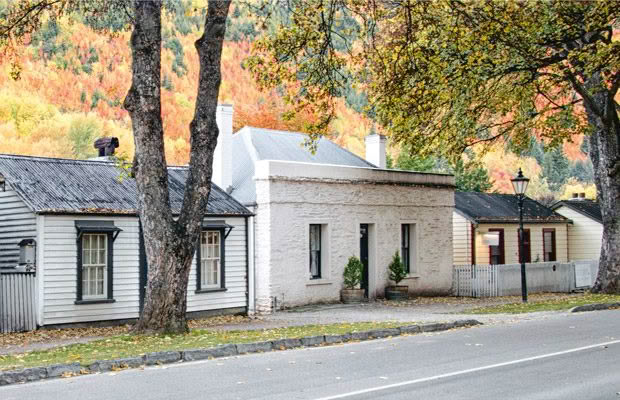
Stevenson’s Cottage (left) is one of several 19-century cottages Heritage New Zealand has classified as the Buckingham Street Historic Area.
Six bodies under one petite roof wasn’t always relaxing, mind. “God knows how we all fitted and functioned in there,” says Lucy. When inclement weather kept them indoors, they played cards, Monopoly, Cluedo and knucklebones, hunkering down in their hand-sewn sleeping bags. But when the weather was kind, the Bennetto kids were down at the river making dams or putting their roaming time to good, enterprising use.
Catherine (who became an early-childhood teacher) explains: “We used to collect bottles from rubbish bins and get cash for them — that’s how we got our pocket money. When Mum and Dad got sick of us, they’d say, ‘Right, it’s time to go and do a bottle run.’ We’d also do the phone boxes — we learnt the scam of pushing a few buttons to get money (some of the tourists who made international calls didn’t know how to get a refund). So that was our routine: check the bottles, check the phones.”
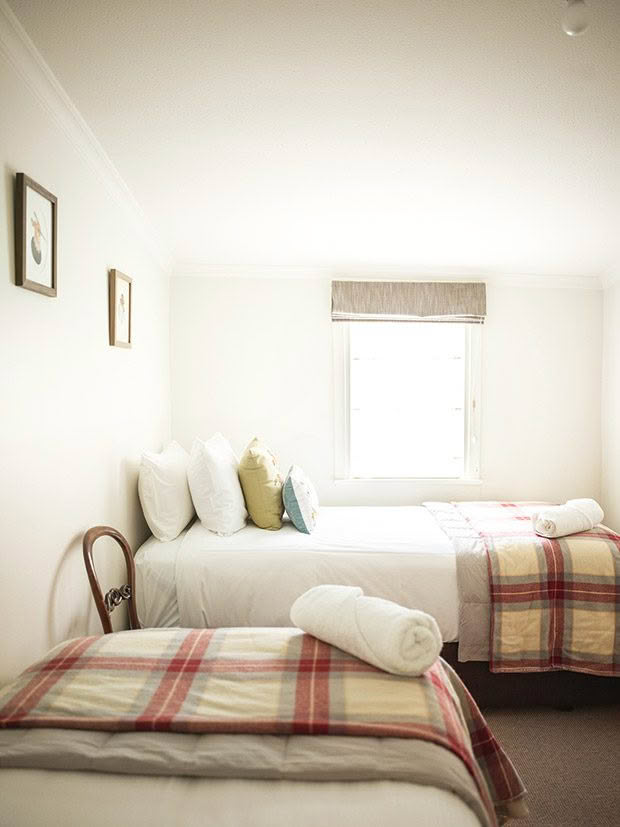
Charlie, the youngest of the Bennettos, was focused on a loftier income stream. “Arrowtown was born of gold, and that added some mystique to the place. While my brother and sisters were hustling tourists for pocket change, I would be trying to make some major coin on the river gold panning.” He’s now an accountant.
As the kids grew, Murray and Laetitia found ways to compensate for the cottage’s unyielding girth. They added a small extension perpendicular to the house in the late 1970s and, later, built a garage out the back with a makeshift bunk room above it. In the 1980s, they employed local architect Michael Wyatt to design an extension for the garage and create what the family called the “Back House”.
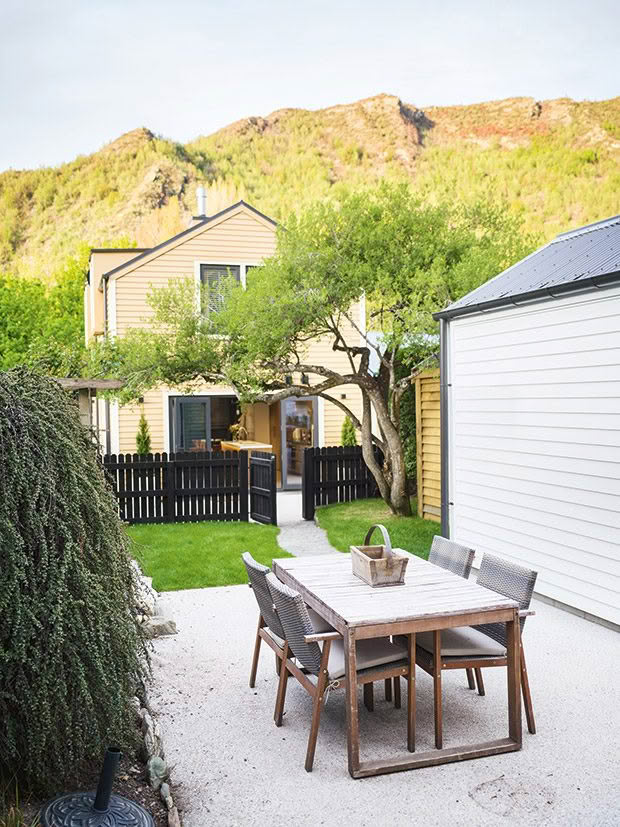
The cottage and the Back House eye up each other over the fence and through the old spindle tree.
Stevenson’s Cottage has now been in Bennetto hands for half a century. With Murray and Laetitia both at rest in the Arrowtown Cemetery, the cottage, and the family lore contained within the walls, exerts an ever-stronger pull. Lucy says: “We’ve always been a close family and having that cottage there (along with the back house) has been the one stable thing that we’ve all been able to hang on to. We love Arrowtown — that’s the heart home, really.”
In 2016, the siblings decided to spruce up the family buildings in Buckingham Street and returned to architect Michael Wyatt. He suggested they pull down the old hotchpotch 1980s extension and start afresh.
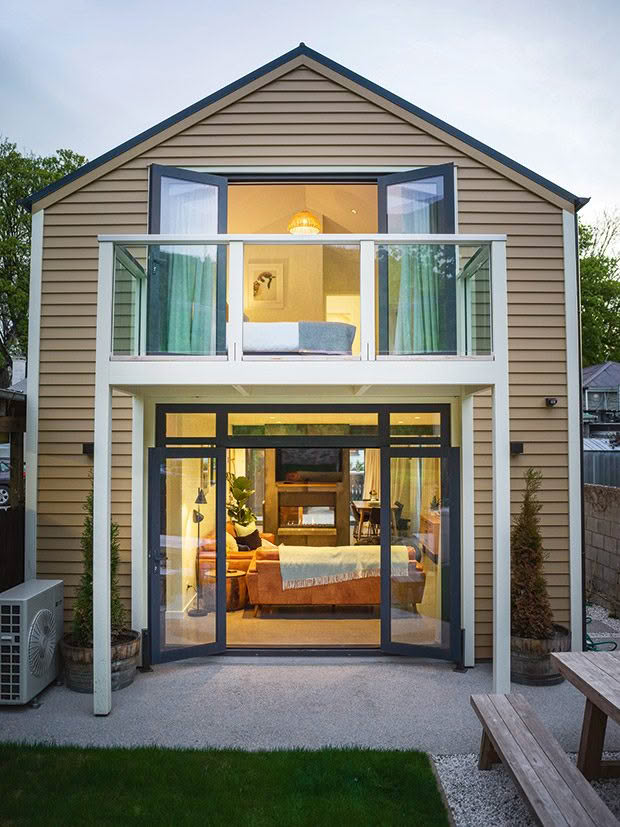
Queenstown’s Wyatt & Gray Architects designed the Back House and it is everything the old cottage isn’t: spacious, open-plan, two-storeyed and sumptuously furnished.
The new Back House behind the beloved old cottage is now a three-bedroom boutique pad with all the bells and whistles. The cottage, meanwhile, has some modern concessions (a new bathroom/laundry annex with underfloor heating, a television and wifi) but mostly sits in its Bennetto childhood timewarp.
Edd says: “Instead of going back to the cottage’s original 19th-century style with the renovation, we stayed with the era of our childhood: the 1980s. It was very Laura Ashley — but that was the backdrop to our biggest memories. It’s kind of a homage to the happy times we had growing up.”
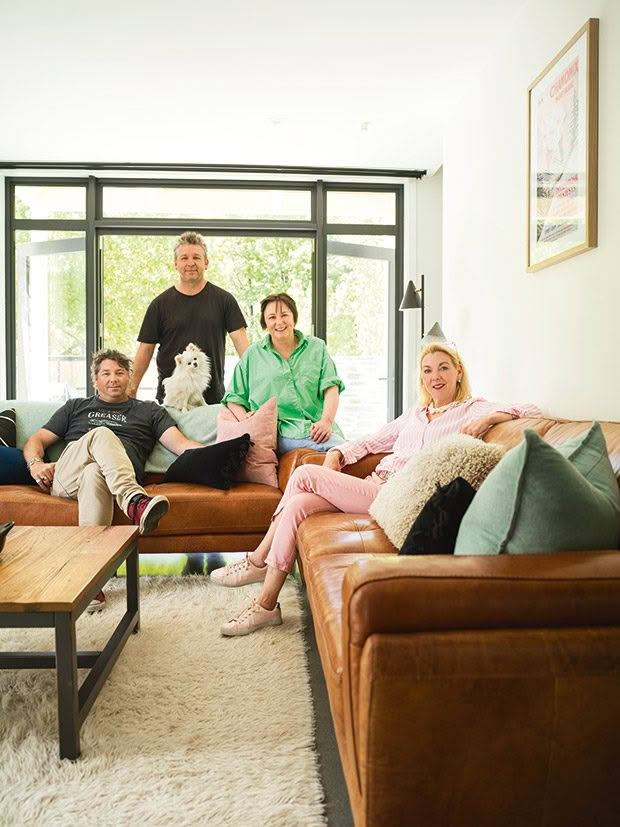
For all its creature comforts, some Bennetto siblings still prefer to stay in the cottage. “That’s where we learnt how to be kids and had the happiest days of our lives”, says Catherine. Lucy, meanwhile, is on the fence: “We all enjoy a bit of modern luxury so the Back House could be the new favourite.”
They employed Stefan and Andrea Cammell of residential construction company Cammell Projects to help with both the new build and the timewarp. Related to the Bennetto clan by marriage, the Cammells were suitably invested in giving the cottage a makeover that combined old and new while preserving the family vibe.
They helped source wallpaper and flooring like that the siblings remember from their childhood and preserved the old door frame that still bears the felt-pen-scrawled names and heights of the growing clan. They also recycled the wood the Bennetto kids had spent their holidays staring at in the old garage/bunkroom to make new benchtops.
- Though the siblings are now scattered (Auckland, Christchurch and Queenstown), they still relish their Arrowtown time.
- When asked what their parents would have thought of the cottage makeover and the fancy-pants house out back that replaced the old garage and bunkroom, Lucy says, “They’d have loved it. They’d probably have found it a bit hot in there, though.
- “Back in the day, we didn’t have insulation, so if you were cold, you put on a jumper. You’d wake in the morning freezing. We never really complained. But now we would.”
There are vestiges of the cottage’s early years here, too: the original coal range (still in situ, though long out of puff); a pair of antique bellows (which mock the now defunct old fireplace); and some time-worn kitchen scales and lanterns. “Being in that little cottage is not only a trip back to the 1800s — it’s also like returning to a time that doesn’t exist anymore,” says Lucy.
With the Bennetto clan spread far and wide these days, the siblings have opened their Buckingham Street properties as holiday rentals. This means cottage-curious tourists can now fill their boots and peer from the inside out.
When Edd’s wife (also called Catherine) took their sons to see the cottage’s makeover, they were more interested in testing out the legendary schtick of the Bennetto kids than watching telly. She explains: “They’d heard the stories about their dad surprising the tourists and wanted to do the exact same thing. They sat there waiting for some to go by, then banged on the windows and roared at them.”
Proof positive, then, that the 1980s are alive and well at 55 Buckingham Street.
HOME DISCOMFORTS
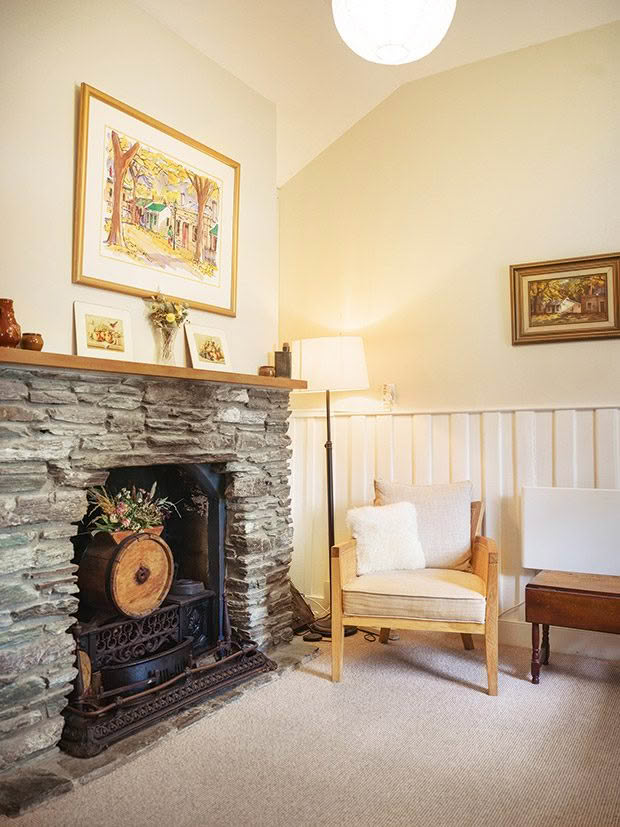
All the artwork in the cottage has family significance. The painting above the coal range is by Angus Watson (their mum’s cousin).
In its earliest decades, Stevenson’s Cottage did not offer much in the way of comfort, although it would have seemed quite decadent to goldminers who’d previously endured calico tents. When the mercury plummeted (there are rumours of a withering minus-28 degrees Celsius hitting Arrowtown in 1903), the old coal range and fireplace were the only sources of warmth.
Those with large families (such as the cottage’s first occupants, Bernard and Adelaide Rushton, who lived there with their eight children in 1877) would have had to top and tail as many children in the same bed as was practicable. And if anyone needed a nocturnal trip to the toilet, there’d likely be a game of rodent dodging en route — until a rat-repelling spindle tree was planted nearby.
In 2015, the Otago Daily Times gave a sense of the cottage’s early loo situation: “At the back of the property lies one of Arrowtown’s least-known historical features. Shaded by a large tree is the wooden framing of an outhouse, underneath which — concealed by wooden boards — is one of the village’s only remaining long drops. The tree, which repels rats and mice, was planted to keep the area vermin-free.”
Love this story? Subscribe now!
 This article first appeared in NZ Life & Leisure Magazine.
This article first appeared in NZ Life & Leisure Magazine.


